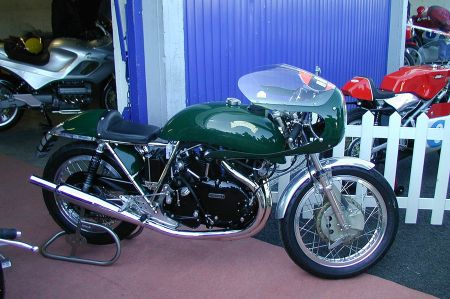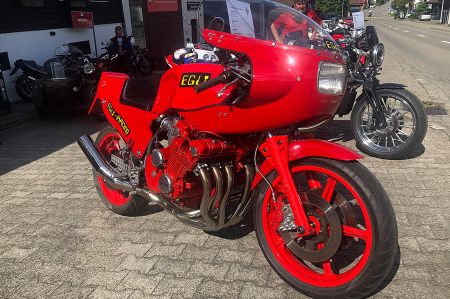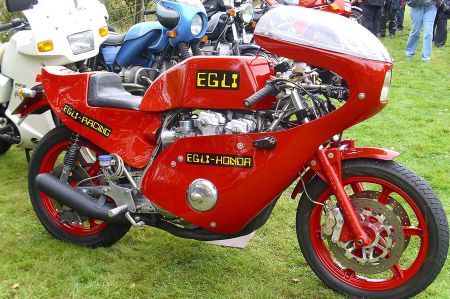Fritz Egli – frame designer for motorcycle chassis
- Written by Portal Editor
The first rides on the high-horsepower motorcycles from Japanese manufacturers such as Honda, Kawasaki, Yamaha and Suzuki at the beginning of the 1970s quickly showed that the chassis could not keep up with the existing motor power at all.
Too extreme the memory of the rocking of the chassis of the CB 750 Four from Honda and also the XS 1100 from Yamaha showed the same behavior a little later from a speed of 185 km/h, which then miraculously disappeared again at top speed: rocking from the Suspension fork to the entire chassis. So it was no wonder that resourceful hobbyists initially tried to tackle these problems “privately”. The memory of a North German master baker, who himself was an enthusiastic motorcyclist by the name of Behrends and who began building in his bakery, is still too good: the first fork stabilizer was born.
First central tube frame by Fritz Egli
 As early as 1967, Fritz Egli founded a motorcycle workshop in which he reworked a Vincent Black Shadow and fitted it with a central tubular frame. This made Egli 1968 Swiss champion in motorcycle hillclimbs.
As early as 1967, Fritz Egli founded a motorcycle workshop in which he reworked a Vincent Black Shadow and fitted it with a central tubular frame. This made Egli 1968 Swiss champion in motorcycle hillclimbs.
However, Fritz Egli became known with his own frame designs for Japanese motorcycles of the 1970s, above all for the Honda CB 750 Four, the Honda CBX ("Egli Red Baron") and the large four-stroke engines of the Kawasaki Z series. Significant chassis unrest due to chassis defects resulted from the now achievable high speeds of the increasingly powerful engines. Egli took the Japanese drives and built them into their own stable frame constructions. Characteristic of the Egli frame is the central tube with a diameter of approx. 100 mm and the use of straight struts that are only subjected to tension or pressure. Egli was not the inventor of this frame construction, but he made it popular. Initially equipped with a Ceriani telescopic fork, later with an Egli fork stabilizer and Elektron cast wheels, Egli motorcycles were mostly delivered in red.
MRD1 - to this day a masterpiece in chassis construction
One of his well-known street motorcycles was the Egli MRD 1 based on the Kawasaki Z 900, which was bored out to 1016 cm³ and equipped with an ATP exhaust gas turbocharger to achieve an output of up to 180 hp (132 kW). The 155 hp (114 kW) version with a boost pressure of 0.69 bar achieved acceleration from 0 to 200 km/h in 7.1 seconds and a top speed of 297 km/h in 1979; a value that was only surpassed 20 years later in 1999. TV chef Horst Lichter is one of the few owners of an MRD1 of which "a handful" were built.
Red Baron - rebuilt Honda CBX
 Also a famous street motorcycle was the EGLI-CBX 1000 Red Baron based on the Honda CBX, which was bored out to 1047 cm³ and with an output of 122 hp. It also has a central tube frame with a cantilever rear wheel swing arm. One of the 50 owners is TV chef Horst Lichter.
Also a famous street motorcycle was the EGLI-CBX 1000 Red Baron based on the Honda CBX, which was bored out to 1047 cm³ and with an output of 122 hp. It also has a central tube frame with a cantilever rear wheel swing arm. One of the 50 owners is TV chef Horst Lichter.
Egli-Colani with exhaust gas turbocharger
The fully faired Egli-Colani with exhaust gas turbocharger and 1425 cc Kawasaki engine was developed in 1986 for record runs. The power was given as 300 hp. On December 7, 1986, the Egli-Colani set a speed record of 272.414 km/h over 10 km (with a standing start).
Fritz Egli is now an importer of the Indian Enfield motorcycles from Madras/India, which are checked for quality defects, revised and improved after the import.
Please read as well:
